EWOSA News - July 2024

- Home
- EWOSA News - July 2024
Welcome to the latest edition of the Energy and Water Ombudsman SA (EWOSA) quarterly newsletter: your one stop shop for emerging consumer trends, hot issues and policy matters.
On this page
From the Ombudsman
It has been yet another challenging and interesting year here at EWOSA. Not only did our case numbers increase in 2023-24, but there are also plenty of changes happening in essential services, particularly electricity.
Our office received 9561 cases in 2023-24, the highest volume in five years. Complaints associated with billing – our largest category – increased by 21%. There was also a significant increase in the number of customers encountering issues with their energy contracts.
In the June 2024 quarter, we received 2380 cases, an increase of less than 3% compared to the March 2024 quarter, but an increase of 36% compared to the same period in 2023. Electricity accounted for 82% of complaints, followed by gas (12%) and water (6%).
We have now reached the depths of winter. As people try to keep their homes and families warm, so the demand for energy increases. To help customers manage their energy use during the colder months, the South Australian Government released some great tips in their Winter Heating Guide 2024. For more information, see our “Customer Corner.”
There is mixed news on the prices of essential services for the 2024-25 financial year. Electricity prices are falling by a small amount, but the cost of water and sewerage is rising. More detail on this is provided in the “Hot Issues” section, including advice for customers on how to shop around for a better deal on electricity and gas prices.
As growing numbers of electricity consumers receive a smart meter, the shift from single rate tariffs to time-of-use tariffs is becoming an increasingly important issue. At the moment, retailers aren’t required to inform customers of the change until the next bill, so this can result in some customers experiencing “bill shock.”
The Australian Energy Market Commission is currently considering the electricity rules and regulations associated with speeding up the rollout of smart meters and improving customer protections. Such protections are expected to include requiring retailers to provide notification of time-of-use tariffs in advance and prohibiting fees associated with smart meter installation. More information on this can be found at https://www.aemc.gov.au/rule-changes/accelerating-smart-meter-deployment
We are here to help if you are unable to resolve a matter with your provider or need some information. Please contact us on 1800 665 565 or via our website if you need assistance.
Sandy Canale
Energy and Water Ombudsman SA
Consumer Trends 1


Hot Topics
In some good news for South Australian electricity customers, the Australian Energy Regulator (AER) has confirmed that the Default Market Offer (DMO) price for 2024-25 will fall. For residential customers, the price will drop by between $27 and $49. For those with controlled load, such as electric hot water systems, that’s a fall of 1%. For those without a controlled load, it represents a 2.2% reduction. The DMO price for small business customers will fall by 8.5% ($497 lower).
The DMO price caps the price electricity retailers can charge households and small business customers who are on standard retail contracts. It also services as a comparison price for market retail contracts.
You can access more information about the DMO price at https://www.aer.gov.au/news/articles/news-releases/final-decision-electricity-prices-protect-consumers
If you’re struggling to pay your bills, contact your retailer as soon as possible, because under national energy laws they must assist you. Your retailer is also required to tell you on the front page of your bill, at least every 100 days, if they can offer you a better deal.
You can also compare energy market offers from retailers at the AER’s Energy Made Easy website https://www.energymadeeasy.gov.au/
Unfortunately, water prices are increasing by 3.5% above the rate of inflation in 2024-25. This equates to a rise of around $85 for the year for a household with an average property value and average water use. The actual dollar increase will differ, depending on the value of the home and the amount of water consumed.
The price increase reflects the need to continue investing in the water and sewerage networks while supporting unprecedented levels of housing growth.
To minimise the impact on water consumers experiencing vulnerable circumstances, the State Government is increasing concessions for water bills. The average concession card holder will now receive $412 off their annual water and sewerage bills.
You can read more about the water price changes at https://www.sawater.com.au/my-account/water-and-sewerage-prices/water-prices and the water and sewerage concessions at https://www.sa.gov.au/topics/care-and-support/concessions/household-concessions/water-and-sewerage-rate-concession
The AER is undertaking a review of the payment difficulty protections contained in the National Energy Customer Framework.
An Issues Paper was released in the middle of May. It sought feedback on several issues:
- the effectiveness of existing protections for consumers experiencing payment difficulty
- whether there are opportunities to strengthen protections for consumers experiencing payment difficulty
- the benefits and limitations of other frameworks and approaches
- the costs and benefits of potential changes to the framework.
We provided a joint submission with interstate Energy and Water Ombudsman to the AER in late June. In it, we recommended improved arrangements for energy consumers who are experiencing payment difficulties.
While the due date for submissions has now passed, you can read more about this important review, at https://www.aer.gov.au/industry/registers/resources/reviews/review-payment-difficulty-protections-national-energy-customer-framework
Consumer Trends 2


Case Studies
The Issue
Mr R explained he left his provider because he found better rates elsewhere.
His original provider contacted him to offer a more competitive contract, so he transferred back to them.
He advised that he subsequently found out this was not the best plan available.
Our Review
We found the provider did not ask Mr R the correct questions to determine what the best plan would be and failed to discuss his solar generation and feed-in tariffs.
Resolution
Mr R’s provider reversed the bills issued on the original contract and re-issued them on the cheaper rates, which resulted in his account having a credit balance over the period in dispute.
The Issue
Ms M explained her provider contacted her about getting a smart meter.
The agent did not advise her that she could opt out of the meter upgrade or that the upgrade would result in time-of-use tariffs being used for billing purposes.
Our Review
We found that between November 2023 and June 2024, Ms M paid $340 less on the time-of-use tariffs than she would have on a single-rate tariff.
Resolution
While Ms M was financially better off on the time of use tariffs, her provider applied a $500 goodwill credit to her account for the failure to properly inform her that she could opt out of the smart meter upgrade.
Consumer Trends 3
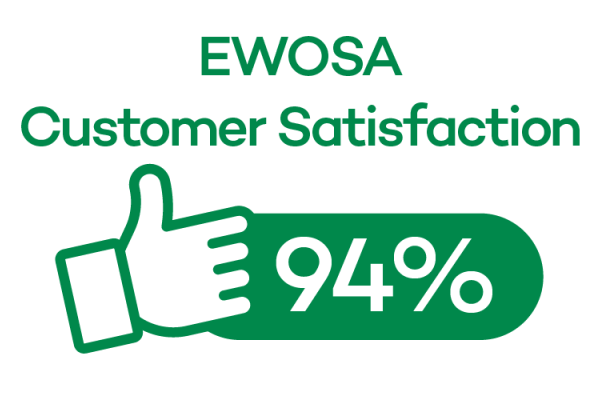
Customer Corner
In May’s Federal Budget, the Commonwealth Government announced that it is providing a $300 energy rebate for all households in 2024-25 and $325 for eligible small businesses (those that consume less than 160MWh annually).
For households, the rebate will be delivered in four equal installments of $75 on quarterly electricity bills during the financial year. Customers of electricity retailers don’t need to do anything to receive the rebate. Customers of embedded network operators will need to apply to the State Government. The actual timing of the payment will depend on the billing cycle.
More information on the rebate is available at https://www.energy.gov.au/energy-bill-relief-fund and https://www.sa.gov.au/topics/care-and-support/concessions/household-concessions/energy-bill-relief
The Emergency Electricity Payment Scheme (EEPS) provides an emergency payment to help electricity customers experiencing financial hardship. This includes people who are unable to pay an electricity bill or debt and are either disconnected or at risk of disconnection from their electricity supply.
The South Australian Government made improvements to the EEPS in the latest State Budget in the middle of June to:
- double the maximum payment to $800
- remove the debt cap of $2,000
- increase the payment frequency to once every two years (from once every three years).
You must have a financial counselling appointment to apply for EEPS. The financial counsellor will assess your financial situation, discuss hardship options and determine eligibility to submit an application on your behalf.
You can access a financial counsellor in one of two ways:
1) Visit the Find a Financial Counsellor online tool (https://www.safca.org.au/find-a-financial-counsellor.html) from the South Australian Financial Counsellors Association, to help you find a financial counsellor close to you. Simply enter in your suburb and options will be noted on the interactive map.
2) Call the National Debt Helpline (NDH) on 1800 007 007. Their intake team will either book an appointment with, or refer you to, your closest financial counsellor. The NDH website (https://ndh.org.au/) also has a live webchat where you can ask questions around the process and eligibility.
More information on the EEPS is available at https://www.sa.gov.au/topics/care-and-support/concessions/financial-aid/emergency-financial-aid
The South Australian Government released a Winter Heating Guide in late May.
The Guide contains many tips on ways to reduce energy use and at the same time still stay warm in winter. These tips include:
- open curtains and blinds during the day when the sun is out
- only heat the areas that are needed and use the heater to keep warm, rather than heat the house
- set the heater’s thermostat at 20 degrees rather than 25 degrees – one degree lower can save about 10% in running costs
- make sure the heater is maintained properly, for example, by cleaning the filter
- draught proof the home by sealing the strips around doors and windows
- add or improve ceiling and wall insulation.
For more information, you can download a copy of the Guide at https://www.energymining.sa.gov.au/consumers/power-usage-savings-and-efficiency
Public Submissions
Consumer Trends 4
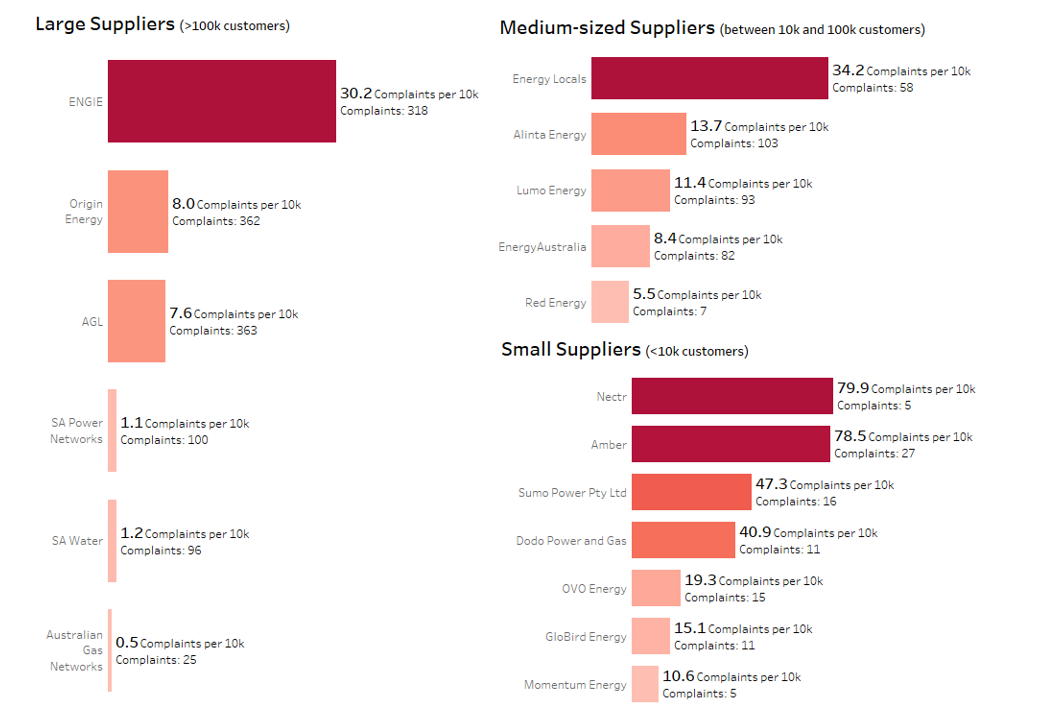
The number of complaints per 10,000 customers for each supplier is calculated by dividing the number of complaints received during the quarter by the total number of customers for each supplier, multiplied by 10,000. Large Suppliers are those with over 100,000 customers, Medium-sized Suppliers have between 10,000 and 100,000 customers, Small Suppliers have between 1,000 and 10,000 customers and Very Small Suppliers have less than 1,000 customers. The total number of complaints is also presented for context.
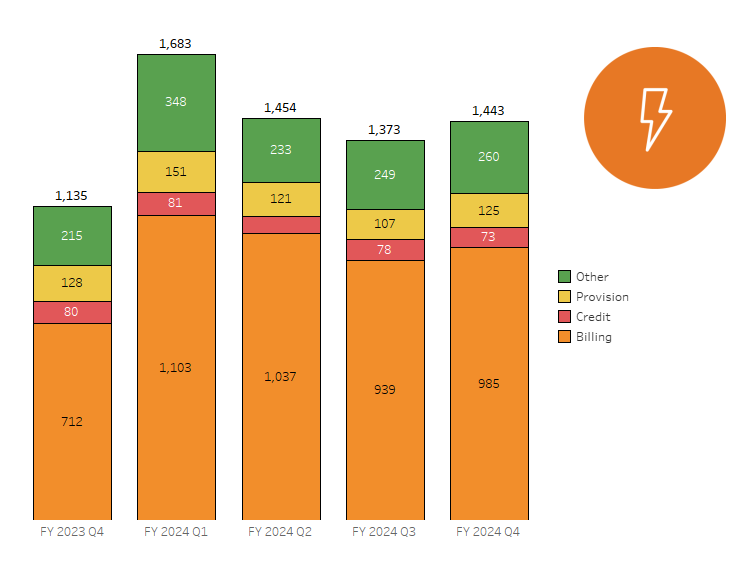
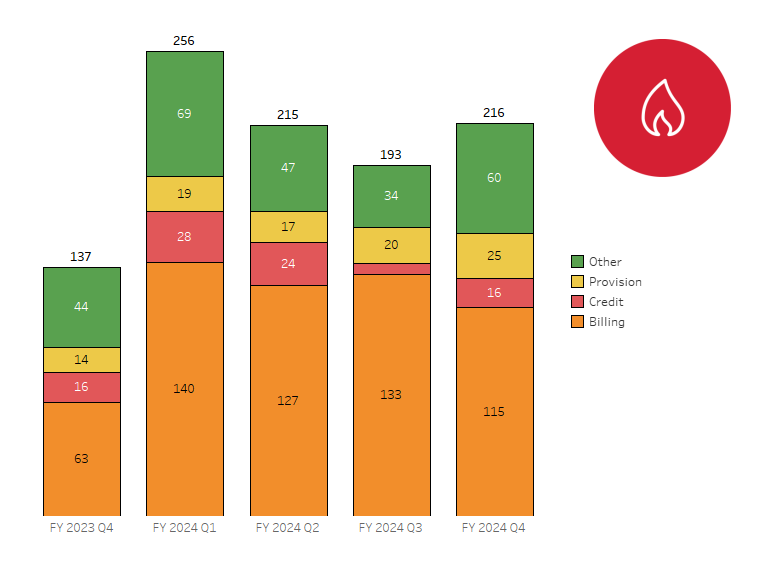
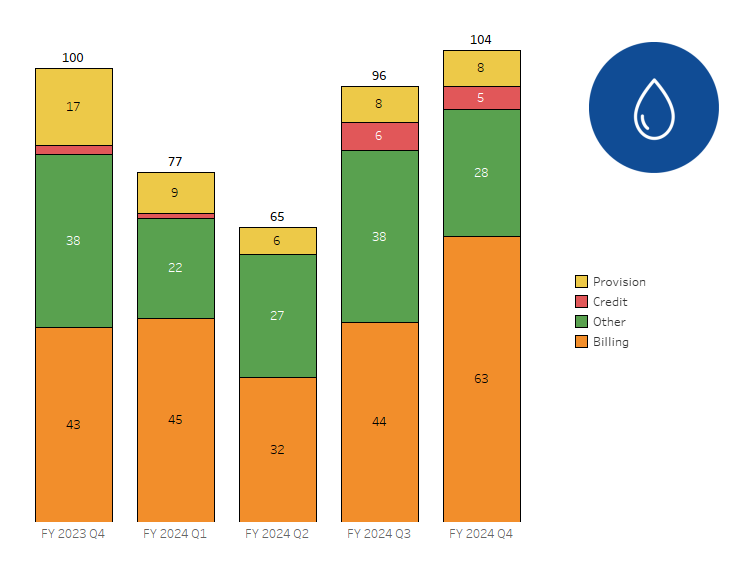
Remember, we are here to help
EWOSA facilitates the prompt resolution of complaints and disputes between consumers of electricity, gas and water services and Members of the Scheme by providing a service to consumers which is free, independent, accessible, fair and informal.
Freecall 1800 665 565
SMS 0488 854 555